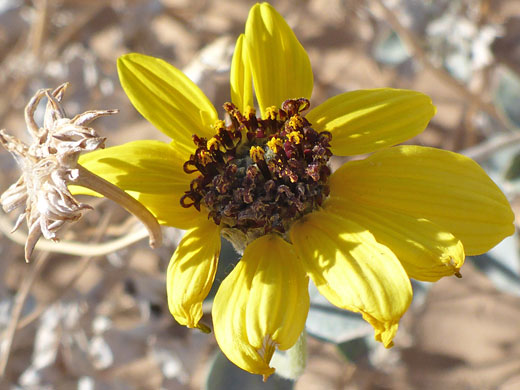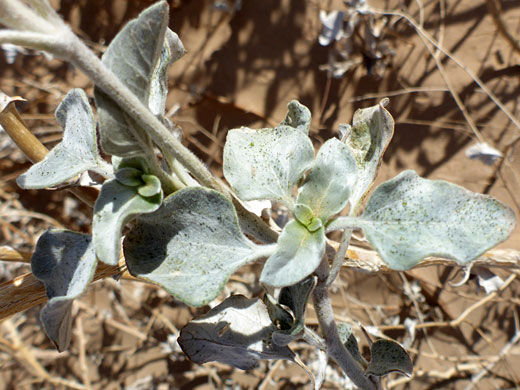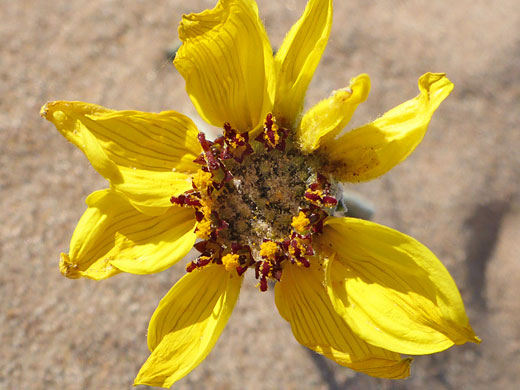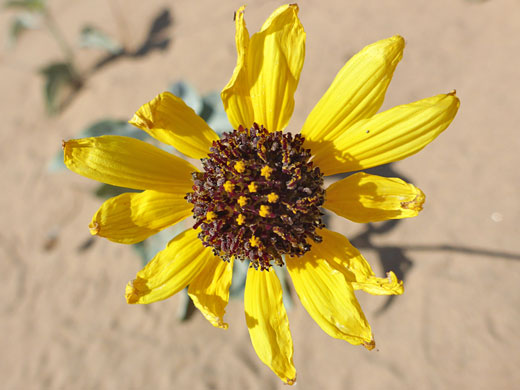Common name:
Showy sunflower
Family:
Scientific name:
Helianthus niveus
Main flower color:
Range:
Scattered locations in far south California, southwest Arizona, and south New Mexico
Height:
Up to 4 feet
Habitat:
Exposed, sandy locations, below 1,000 feet
Leaves:
Ovate to triangular, appressed-hairy, up to 3 inches long, on stalks of around 1 inch
Season:
March to May
Flowerheads of helianthus niveus are relatively large, around 2.5 inches in diameter, formed of between 13 and 21 broad yellow ray florets and several dozen purple-red disc florets, which have yellowish anthers. Phyllaries, in two distinct rows, are broadly lanceolate in shape, and covered with short, soft, appressed white hairs, as are the stalk, leaves and stem. Leaves are broadly ovate in shape, wedge-shaped at the base, with entire margins, and small glands on the undersurfaces.
This species is found in barren sandy places including the Algondones Dunes and around the Salton Sea in California, a few places in the Sonoran Desert of Arizona, and the White Sands region of New Mexico. The usual spring flowering is often followed by another bloom in fall and winter. All US species of helianthus niveus are ssp tephrodes; a second variety, ssp niveus, is found in Baja California.
This species is found in barren sandy places including the Algondones Dunes and around the Salton Sea in California, a few places in the Sonoran Desert of Arizona, and the White Sands region of New Mexico. The usual spring flowering is often followed by another bloom in fall and winter. All US species of helianthus niveus are ssp tephrodes; a second variety, ssp niveus, is found in Baja California.
All Contents © Copyright The American Southwest | Comments and Questions | Contribute | Site Map






